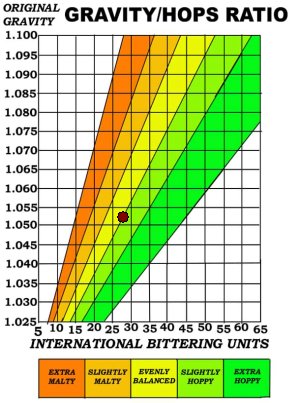Owly055
Well-Known Member
- Joined
- Feb 28, 2014
- Messages
- 3,008
- Reaction score
- 687
I've been thinking a great deal about the two properties, bitterness and sourness. Two distinctly different properties, but the difference is not so easily defined.
Bitterness and Sourness both cancel out sweetness, they are both anti sweetness properties, and thus are parallel.
We have IBUs to quantify bitterness, but do not have international souring units to quantify souring properties. Interestingly hops have both properties, though you never hear sourness used to describe a property of hops.
It seems to me that we need to not look at bitterness as a property but as anti-sweetness as a property. Our beer has either a positive or a negative perceived sweetness. Negative sweetness can be bitterness or sourness or a combination of the two, which actually is the case.
The scale we currently use is deeply flawed, as it is based only on alpha acid percentages, and produces what is undeniably an extremely simplistic result. One brew that is 55 IBUs may taste crisp and pleasant, and not really "bitter" to the palette, and the next at the same IBUs may seem extremely bitter on the palette. We are using 2 dimensional values in a three dimensional world, and it really doesn't work.
This really does not become obvious if you brew "recipes" rather than crafting your own, or work within a limited suite of hops. It doesn't become obvious until you begin experimenting, and have quite a few brews behind you. It's like looking at a color world in black and white.
Beer is a three or more dimensional product, and we seem limited to 2 dimensional tools to describe it. The entire model we are using is inadequate and archaic, yet I have not seen anything that attempts to add the missing dimension. The human mind and sensory apparatus are multi dimensional, and to my mind the truly great brewers are able to encompass the entire range in their minds, even though the tools to articulate it are entirely lacking.
H.W.
Bitterness and Sourness both cancel out sweetness, they are both anti sweetness properties, and thus are parallel.
We have IBUs to quantify bitterness, but do not have international souring units to quantify souring properties. Interestingly hops have both properties, though you never hear sourness used to describe a property of hops.
It seems to me that we need to not look at bitterness as a property but as anti-sweetness as a property. Our beer has either a positive or a negative perceived sweetness. Negative sweetness can be bitterness or sourness or a combination of the two, which actually is the case.
The scale we currently use is deeply flawed, as it is based only on alpha acid percentages, and produces what is undeniably an extremely simplistic result. One brew that is 55 IBUs may taste crisp and pleasant, and not really "bitter" to the palette, and the next at the same IBUs may seem extremely bitter on the palette. We are using 2 dimensional values in a three dimensional world, and it really doesn't work.
This really does not become obvious if you brew "recipes" rather than crafting your own, or work within a limited suite of hops. It doesn't become obvious until you begin experimenting, and have quite a few brews behind you. It's like looking at a color world in black and white.
Beer is a three or more dimensional product, and we seem limited to 2 dimensional tools to describe it. The entire model we are using is inadequate and archaic, yet I have not seen anything that attempts to add the missing dimension. The human mind and sensory apparatus are multi dimensional, and to my mind the truly great brewers are able to encompass the entire range in their minds, even though the tools to articulate it are entirely lacking.
H.W.



























































